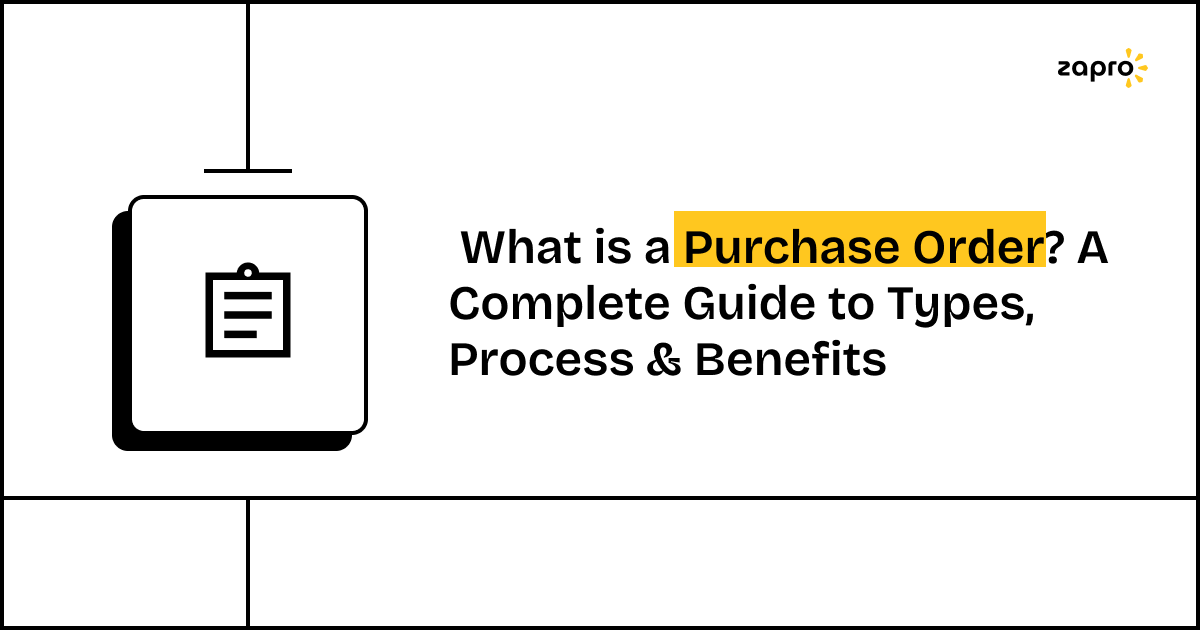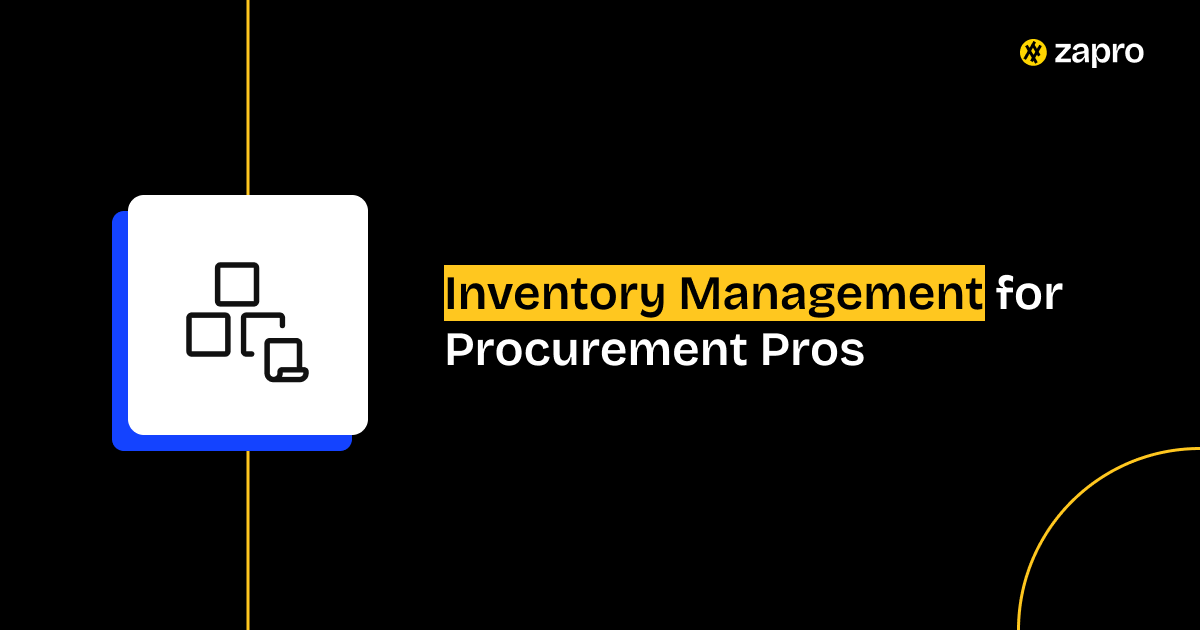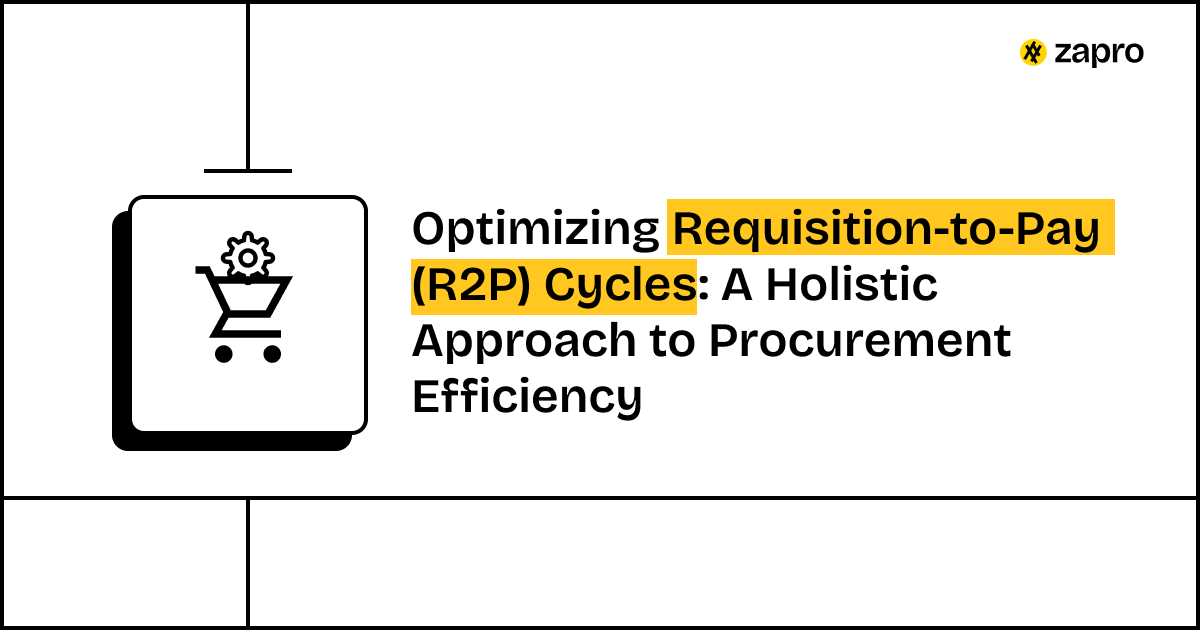What is a purchase order?
So, a purchase order, or maybe PO as people call it, is just a document that a buyer sends to a supplier to say, “we want to purchase this particular thing from you.”
It lays pretty much everything out, like: what is being ordered, how many units do they actually order, the price agreed on, and any terms around delivery or payment. Once the supplier says yes to it, that paper (or digital file) actually will turn into a binding agreement.
You can think of it almost like a handshake that happens before the money part kicks in. It will basically keep things clean, sometimes avoid those awkward misunderstandings, and always will make sure both sides cannot later say, “oh, I thought you meant something else.”
Now here is the thing: purchase orders are not just for big companies. Even smaller or mid-sized businesses benefit from them. They help keep track of spending, they stop random or unauthorized purchases from slipping through, and honestly, they help you look a lot more professional with your vendors.
But of course, not every PO looks the same or works the same way. There are different types, different structures, and the whole process has its own stages. And if you do not understand that, it is easy for the whole system to feel like a pile of paperwork rather than something useful.
That is why in this guide we are going to break it all down. From what a PO really is, to the different types, to how the process flows, plus some practical tips on automating it so you are not drowning in approvals and spreadsheets.
Types of purchase orders
Here’s the thing: not every PO looks the same. Depending on what you’re buying, how often you buy it, and how much detail you already know at the start, there are different kinds of POs people use. Let me walk you through the common ones.
1. Standard purchase order (SPO)
This is the basic one. Probably the one you’ll see most often. You already know the item, how many, the price, when it should show up, all that. Which means you’re basically saying, “here’s exactly what we need.”
For example: Say if a marketing team wants 500 branded notebooks for an event. They also know the supplier, they know the price, they know the deadline and everything. Easy. They just raise a standard PO and done.
2. Planned purchase order (PPO)
This one’s more about planning ahead. You know what you need and roughly how much, but you don’t have the dates nailed down yet. You keep the PO open and release orders as needed.
Example: A factory knows it will need 10,000 units of a part over six months. Instead of raising 12 separate orders, they do one planned PO and issue releases each month.
3. Blanket purchase order (BPO)
People also call this a “standing PO.” You use it when you know you’ll need the same goods or services over and over during a certain period, but you don’t know the exact quantity or schedule upfront.
Example: An IT team sets up a blanket PO with a vendor for tech support through the year, up to $50,000. They don’t know how many times they’ll call, but they’ve set the rules and budget.
4. Contract purchase order (CPO)
Think of this less as an order and more as a framework. It sets the terms and conditions with a vendor but doesn’t list the actual items or quantities yet. Later, when you do raise a standard PO, you just refer back to this contract.
Example: A construction company signs a two-year deal with a steel supplier. Each project team can then order steel against that contract when they need it.
And by the way, new formats are popping up too. A couple worth mentioning:
5. Digital purchase orders (DPOs)
These aren’t a “type” of PO software in what they mean, but more in how they’re done. Instead of paper or email, you create and manage them through procurement software. It gives you approvals, audit trails, integration with supplier portals — all electronic.
6. Recurring or auto-renewal POs
These are for subscription-type stuff. Think SaaS, cloud storage, or leased equipment. The PO just renews automatically every month or quarter unless you stop it.

By automating procurement processes, organizations can reduce manual errors, accelerate purchasing cycles, and improve compliance — enabling better control over spend and supplier relationships.
– Gartner
What is a purchase order process?
Now, a PO does not live on its own. Rather, it’s actually a part of a bigger flow that connects the request, the approval, the delivery, and the payment. Here’s how it will usually go:
- Purchase requisition
Somebody in the business says, “we need this.” They fill out a purchase requisition form (PR). It lists what, why, when. - Requisition reviewed
Procurement or finance checks it. Do we really need this? Is the vendor already in our system? Are they verified in our vendor management software like Zapro? Do we have the budget? If all is good, it moves forward. - PO created
This is where the PO itself is made. Either typed out manually or generated by procurement software. It includes the details — items, price, payment terms, delivery address. And yes, it gets a unique number so you can track it later. - PO sent to vendor
Once it’s approved internally, the supplier gets the PO. This is the formal “go.” - Vendor confirms
The supplier checks the PO and says yes, or asks for tweaks. Once they accept, it’s a binding deal. - Goods or services delivered
The supplier delivers. The receiving team checks — is the quantity right, is the quality okay, did it come on time? They usually issue a GRN (Goods Received Note) to confirm. - Three-way matching
Now finance steps in. They match the PO, the invoice, and the GRN. If all three line up, payment can go ahead. If not, it gets flagged. - Payment released
Finally, the money is sent. Could be Net 30, Net 45, or whatever the agreed terms are.
Learn about purchase request email.
What are the components of a purchase order
A PO looks simple at first glance, but every little field matters. Skip one and you’ll feel it later.
PO number
A unique ID for the order. Without it, you’ll lose track fast. Especially if you’re juggling dozens of vendors.
Buyer and supplier info
Names, addresses, contact details. This is to make sure it’s crystal clear who is buying and who is supplying.
Order date + delivery date
When you raise the PO and when you expect the stuff to arrive. Helps with planning and accountability.
Item description and quantity
What exactly are you buying? Part numbers, specs, how many units. No room for “I thought you meant this.”
Unit price and total cost
Price per unit and the total line item cost. This is key for budgets and matching invoices.
Payment terms
Net 30, Net 45, milestone payments, whatever you agreed on. Helps both sides know when cash will actually move.
Shipping details
Delivery address, shipping method, maybe Incoterms if it’s international. You don’t want the order showing up at the wrong dock.
Taxes and charges
VAT, GST, handling fees. It helps to keep all the financial reporting accurate.
Terms and conditions
It is the fine print: returns, penalties, warranties, confidentiality. It is there to protect both the buyer and supplier.
Approval signatures or digital authorization
Someone in-house has to sign off. Physical signature or electronic approval. It’s the internal green light.
Learn more about Cloud Purchase Order System.
Streamline orders. Save time. Control costs.

Benefits of using purchase orders
If you’re running a business with lots of purchases flying around, different vendors, different teams, different departments, a purchase order process is not just “nice to have.” Honestly, it is survival. Without it, things get messy, fast.
Here’s why POs matter so much:
1. Clear documentation and accountability
A PO is basically putting the deal in writing. It says exactly what’s being bought, how much it costs, and the terms. No more vague “we thought you said this.”
Why this matters: It will cut down on finger-pointing later. Every single thing is written down, so if there’s a dispute in the future, you’ve got proof.
2. Better control of spend and budgets
Here’s the big one: money. POs make you stop and approve before the money leaves the bank. That alone helps keep budgets in check.
Why this matters: You can spot overspending before it happens, catch duplicate orders, and actually stick to the budget you planned.
3. Smoother vendor relationships
Suppliers hate surprises. A PO gives them clarity from day one — what they need to deliver, when, and how much they’ll be paid.
Why this matters: Fewer mistakes on their side, fewer headaches on your side. Over time, it builds trust and keeps those relationships solid.
4. Easier invoice matching and payments
When you’ve got a PO, it’s super simple to line it up with the invoice and the goods received. That’s the “three-way match” people talk about.
Why this matters: See you only have to pay for what you actually got. It will cut out fraud, avoid paying twice, and make payments faster.
5. Strong audit trails and compliance
Every PO creates a trail: who asked for what, who approved it, and under what conditions. That’s gold when audits come around.
Why this matters: In industries like healthcare, government, or manufacturing, you must have clean records. POs make you audit-ready by default.
6. Opens the door to automation
POs are the building blocks for procurement automation. Once you have standardised this process means, going forward tools will be able to generate, route, track, and in fact close them without you lifting one finger.
Why this matters: It will also mean that you are spending less time drowning in paperwork, and you get more time to do the strategic work like vendor negotiations or sourcing better deals.
7. Better quality data for smarter decisions
POs aren’t just paperwork; they’re data. Over a period of time, they tell you which suppliers deliver on time, also how long will cycles take, and where costs actually creep up.
Why this matters: It only means you can stop relying on gut instinct. Instead, you use real numbers to guide decisions, like who deserves more business or where to cut costs.
Learn about What is a blanket purchase order?.
Purchase order vs invoice vs purchase requisition
See these three are the documents that are very often used together in the procurement process. But they serve completely different purposes. Let’s break down what each one does and how they relate to one another:
| Document | What it is | Who creates it | When it’s used | Purpose |
| Purchase Requisition | An internal request to buy goods or services | Employee or department head | At the very beginning of the procurement process | To request approval before creating a purchase order |
| Purchase Order (PO) | A formal document will be sent to the supplier to confirm the order | Procurement or purchasing team | After the requisition is approved | To place an official order with a vendor |
| Invoice | A bill from the supplier requesting payment for delivered goods or services | Supplier or vendor | After goods/services are delivered | To request payment based on the agreed PO terms |
How they work together
- It usually kicks off with a purchase requisition.
Somebody in the company realizes, hey, we need something; let’s say 10 new laptops. They don’t just run out and buy them. Instead, they fill out a requisition form and send it off for approval. - Next comes the purchase order.
And once that request is cleared, procurement will step in; now they will issue a PO to the supplier. Now, that piece of paper (or more likely, some kind of digital document) spells out exactly what’s being ordered, how much it is going to cost, and under what terms. - Finally, the invoice will close the loop.
After the laptops arrive, the vendor sends an invoice that references the PO. Finance then does a quick check: invoice against the PO, plus the goods received note, and if everything lines up, payment gets released.
See that’s the flow in a nutshell. Requisition → PO → invoice.
When each step is used properly, you avoid so many of your usual headaches: no more confusion about things like who ordered what , far better internal controls, neat, and clean documentation from the start to finish.
Common purchase order challenges (and how to stay out of trouble)
Even if you’ve got a PO process in place, let’s be honest, things can still go sideways. Especially if the process is manual or scattered across emails and spreadsheets. Here are a few of the common pitfalls — and how to get around them:
1. Duplicate or missing POs
Yep, it happens all the time. Someone accidentally raises the same PO twice… or forgets to raise one at all.
How to avoid it: Use a centralized system with unique PO numbers. A decent e-procurement tool will flag duplicates before they slip through.
2. Approval delays
This one’s classic. A PO lands in someone’s inbox and just sits there. Meanwhile, deliveries get delayed and prices change.
How to avoid it: Automated workflows with mobile approvals. If managers can approve on the go, things move faster.
3. Inaccurate or incomplete POs
Missing details like wrong quantities, unclear specs, or no delivery date. Vendors hate this, and it usually ends in mistakes.
How to avoid it: Standard templates with required fields. And better yet, system checks for product codes, prices, and vendor data.
4. Mismatch between PO, invoice, and delivery
What was ordered, what was delivered, and what was billed don’t always line up. Payment gets stuck, and suppliers lose trust.
How to avoid it: Three-way matching. It’s not fancy — just make sure the system automatically compares the PO, invoice, and GRN before money goes out.
5. Zero visibility into PO status
Teams often don’t know if a PO is still waiting, already sent, or fulfilled. That uncertainty slows down everything.
How to avoid it: Digital procurement platforms that show live PO status. Everyone sees the same progress in one place.
6. POs raised after a purchase
This one’s painful. Teams go buy something first and only later “raise a PO for the records.” It kills spend control and audits.
How to avoid it: Enforce a strict No PO, No Pay rule. No exceptions.
Fixing these issues doesn’t just save time. It also means stronger compliance, tighter cost control, and better relationships with suppliers.
Learn more about purchase order invoice software.
Automating the PO process with Zapro
Here’s the truth: purchase orders on their own are useful, but the real magic happens when you automate them. Manual PO workflows — chasing approvals over email, juggling Excel sheets, trying to match invoices by hand — they’re slow and messy.
That is where Zapro steps in.
Think of it like this: Salesforce manages customer relationships. Zapro is the “CRM for vendors.” It doesn’t just process transactions — it helps you actually manage relationships, see performance clearly, and reduce risks.
Why Zapro is different:
- Other tools stick to transactions. Zapro brings in collaboration.
- Instead of juggling 15 separate systems (POs here, invoices there, contracts somewhere else), you get one single source of truth.
- Every email, call, contract, and compliance doc — all tied neatly to the vendor profile.
They call it Procurement++, and honestly, it’s a fair name because it goes way beyond just purchase orders.
What Zapro automates for you:
- PO creation & approvals: Auto-generate POs straight from requisitions, with smart workflows handling approvals.
- Three-way matching: Invoices, POs, GRNs — matched automatically so you don’t waste time double-checking.
- Interaction tracking: Every single conversation with suppliers will be logged in one place with Zapro; so even if someone leaves the team, the context doesn’t leave. So everything will be safe.
- Risk & compliance: There is built-in intelligence with Zapro that flags dodgy, fishy vendors and handles compliance without the need for any other third-party tools like Vanta.
- Real-time insights: Dashboards in Zapro can show who’s exactly who is performing, who’s costing too much, and where the leaks are.
With Zapro, you’re not just shaving a few days off PO approvals. You’re making procurement smarter, more transparent, and way more strategic.

Streamline purchase orders for smarter buying.
Automate POs. Boost efficiency.
Don’t miss our weekly updates
We’ll email you 1-3 times per week—and never share your information.

 Healthcare
Healthcare Financial Services
Financial Services Technology
Technology Venture Capitalist
Venture Capitalist Chief Procurement Officer
Chief Procurement Officer Chief Financial Officer
Chief Financial Officer




